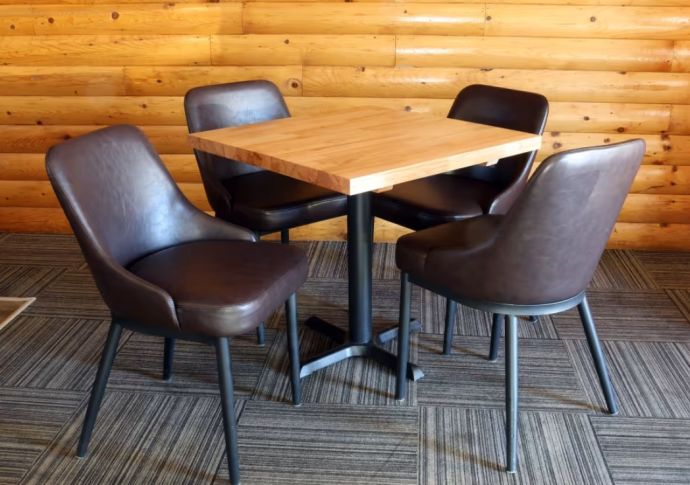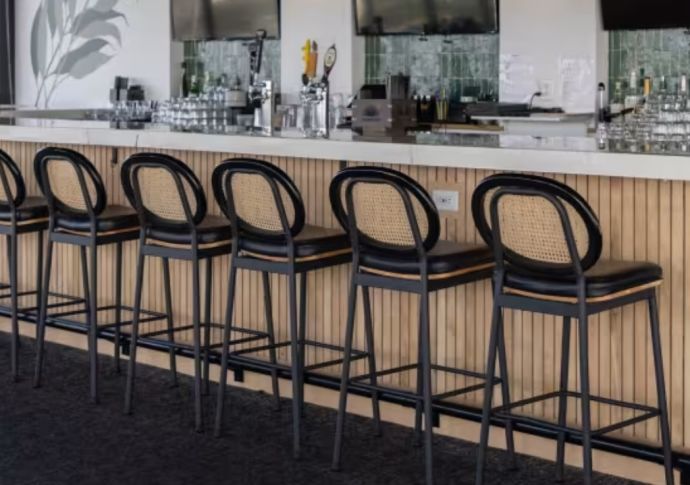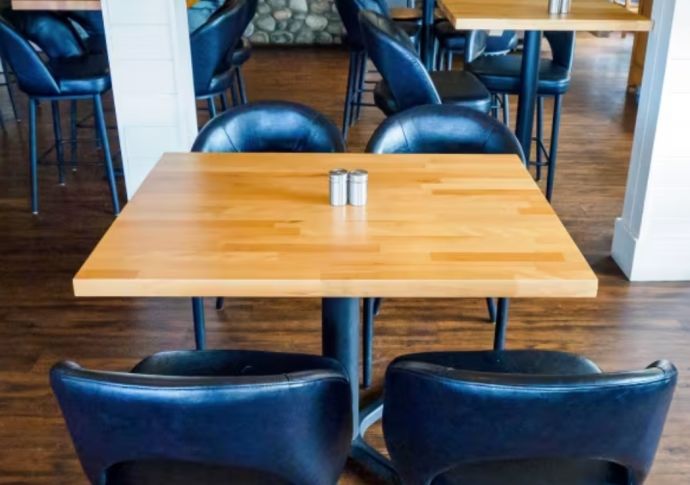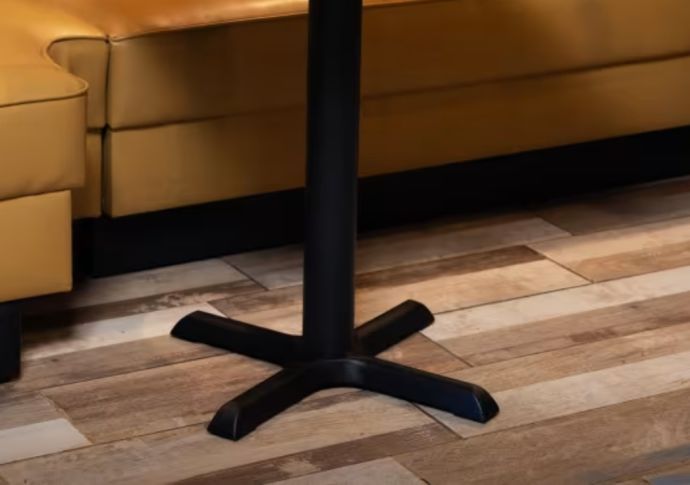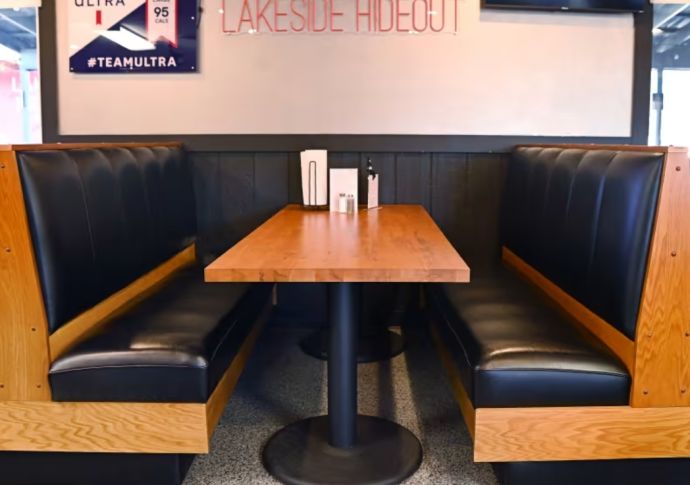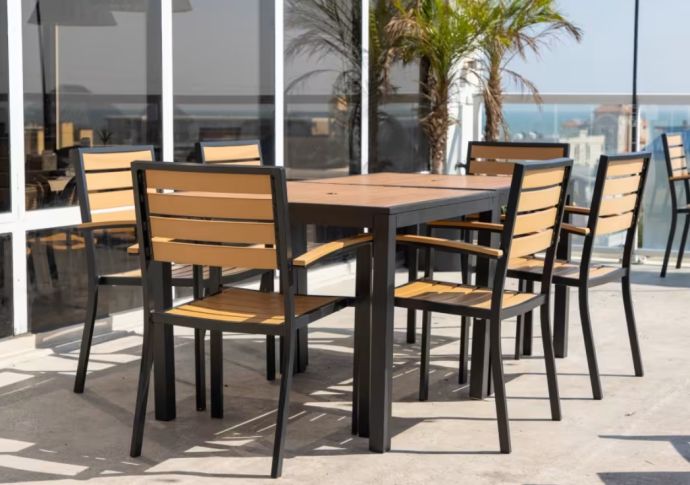Restaurant Tables Guide
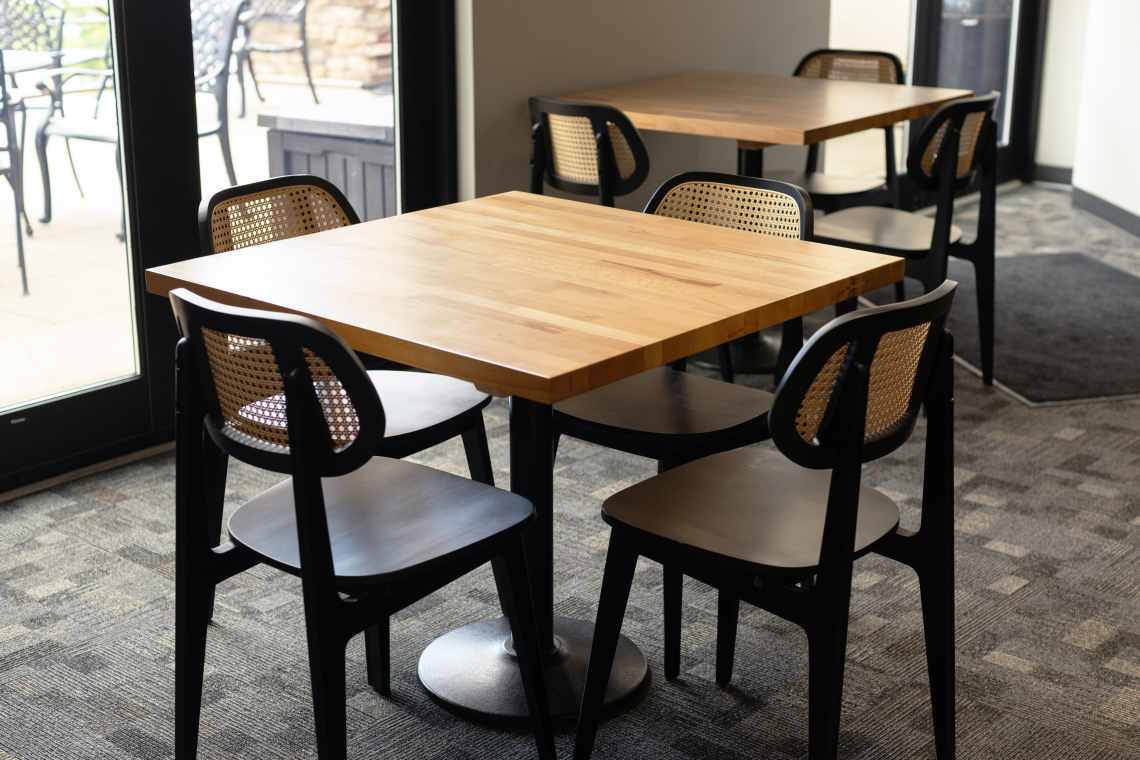
Selecting the appropriate tables for your restaurant may seem straightforward, but in reality, it is a complex task, as many experienced restaurateurs can attest. When it comes to purchasing furniture for a restaurant, tables are often overlooked in favor of other items. However, despite seating being the primary feature that customers notice upon entering a restaurant, tables play a crucial role in shaping the overall aesthetics of the dining area and influencing guests' perceptions of the space. Tables typically serve as the focal point of a restaurant and can significantly impact the ambiance and overall impression of the establishment.
How to Choose the Right Tables for Your Venue?
Every restaurant possesses a unique ambiance, and each owner has their own vision for the ideal seating arrangement. With varying venue requirements and design preferences, it is important for every table set-up design and layout to receive careful consideration and expert assistance.
Venue Size and Desired Seating Capacity
When considering the type of restaurant tables to choose, it is important to evaluate the space available and whether it can accommodate 10 or more tables. While there is no one-size-fits-all rule for selecting the right tables, there are key factors to consider before placing an order.
- Select the right sized tables based on your available restaurant space.
- Never compromise on the quality of materials – they should meet commercial industry standards. Restaurants see a lot of traffic, so sturdy and long-lasting tables are important.
- The table surface should be large enough to accommodate the food you serve at your restaurant. For example, smaller table surfaces would work in a fast-food restaurant whereas a fine dining establishment would require a larger surface to accommodate the high-end setting.
- Materials selected for your table should be easy to clean, maintain, appealing and durable. Tables for outdoor settings should be weatherproof.
- The standard height for a regular table can measure between 28" to 30" H. Bar tables stand at least 42" high.
Materials
The construction of restaurant tables incorporates a diverse range of materials to accommodate different decor styles. Some tables feature a unified design approach, while others combine various materials for the table top and base. The following are commonly used materials for crafting restaurant tables:
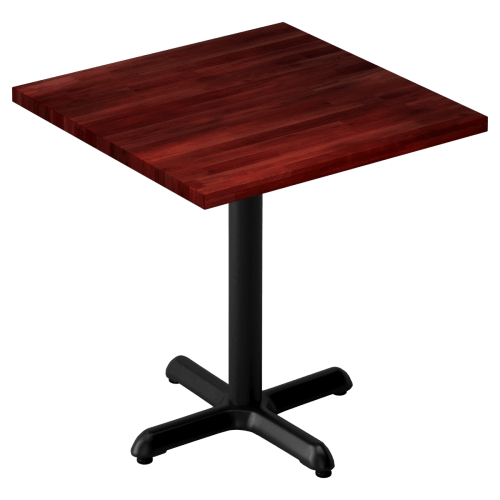
Wood is a highly sought-after choice for restaurant table tops due to its versatility. Hardwood, in particular, is favored for its visual appeal, durability, and longevity, making it a common choice for commercial table construction. As wood table tops are typically more costly than other options, they are commonly found in upscale dining establishments.
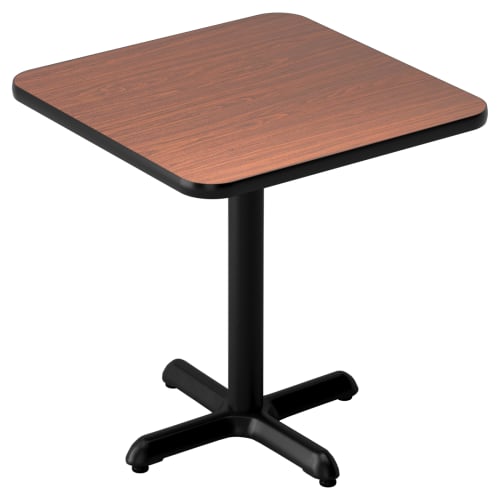
Laminate table tops are versatile options that cater to various budgets and design preferences. Offering durability and strength, laminate materials can mimic the appearance of wood, stone, metal, and more. Laminate table tops can be customized with a range of designs, including the option to imprint images such as restaurant logos onto the surface.
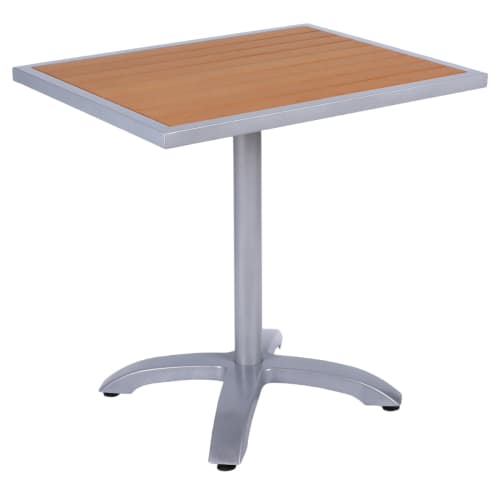
Designed to replicate the natural appearance of teak wood, this material is lightweight, durable, low maintenance, weatherproof, easy to clean, and cost-effective. As a result, there is a growing trend in the demand for synthetic teak dining tables for use in both indoor and outdoor commercial settings.
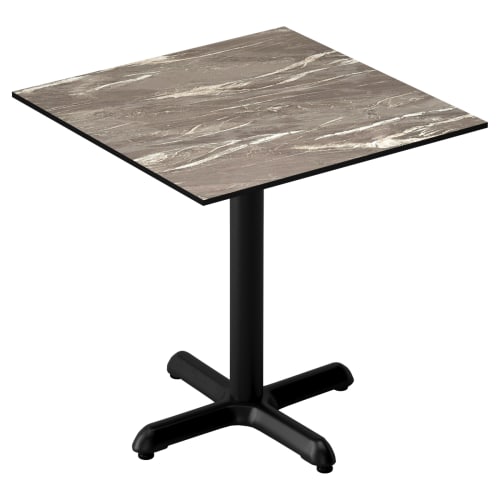
Resin tops are known for their exceptional durability, scratch resistance, and heat resistance. They are versatile enough to be used in both indoor and outdoor settings, and can be crafted in a wide range of styles mimicking materials like wood, stone, and metal.
Styles and Shapes
Restaurant tables are available in three standard shapes, with the option of a drop leaf on some models. The shape and size of the tables are determined by your design, as well as the available space and cuisine type of your location. For example, an upscale romantic restaurant may choose mainly square tables that can accommodate couples or up to four people. Larger parties can be accommodated by simply placing tables together when needed.
Round tables are generally used alongside square and rectangular tables and are typically reserved for larger parties of five or more diners. Rectangular tables are commonly found in cafes, diners, and other casual dining locations. The option to convert square tables into round tables with drop leaves is available on some models, which allows for accommodating larger parties without the need to rearrange tables. This feature is commonly seen in ethnic cuisines where families prefer to dine together.
Selecting the appropriate style of tables is the next step in setting up your restaurant. While the size and shape of the tables are mostly determined by technical considerations, the style is influenced by the interior design theme of your establishment. Whether your restaurant falls under the categories of fast food, classic diner, or urban steakhouse will influence the style of tables that are most suitable. Our range of restaurant tables encompasses a variety of styles, including four popular options:
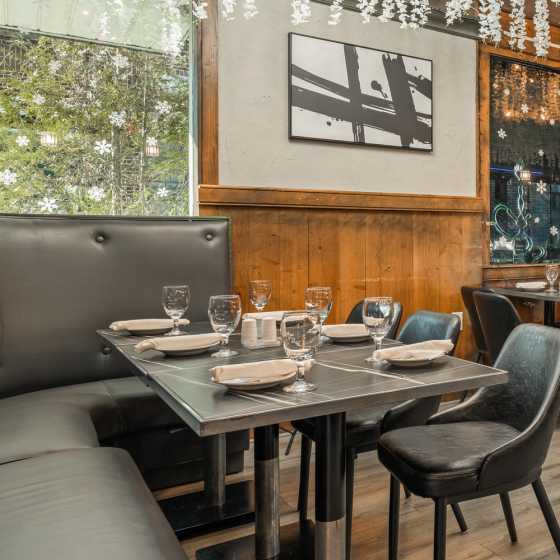
Upscale restaurants not only emphasize the quality of their cuisine but also strive to provide customers with a luxurious and serene atmosphere to enhance their dining experience. The use of solid wood table tops contributes to the overall richness of the interior, particularly when they are finished to perfectly complement the seating.
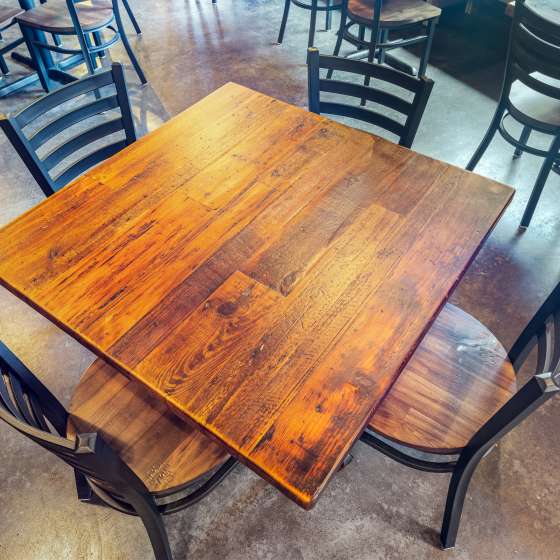
The industrial design style is defined by the pairing of wood and metal, often with a distressed finish. The combination of weathered wood and clear-coated metal creates a modern urban feel reminiscent of a factory setting. Finding the perfect balance between a raw industrial atmosphere and a stylish urban space can be achieved by selecting the appropriate mix of industrial tables and chairs.
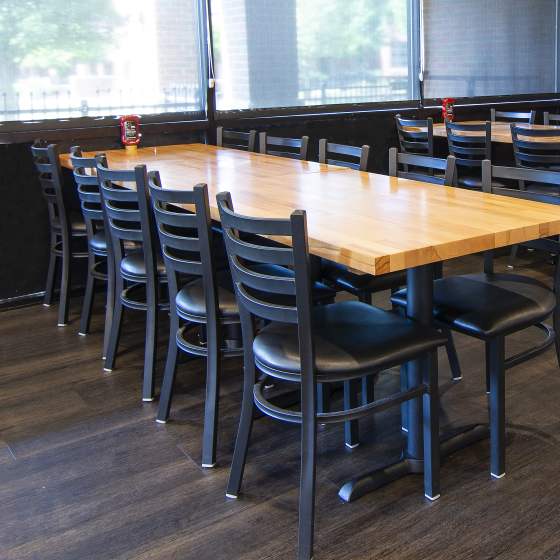
The recent small-scale community revival has extended to restaurants and other social venues. Growing in popularity, communal dining offers a practical solution for hosting large gatherings, maximizing seating capacity, and bringing together unfamiliar individuals who may depart with newfound connections after sharing a meal.
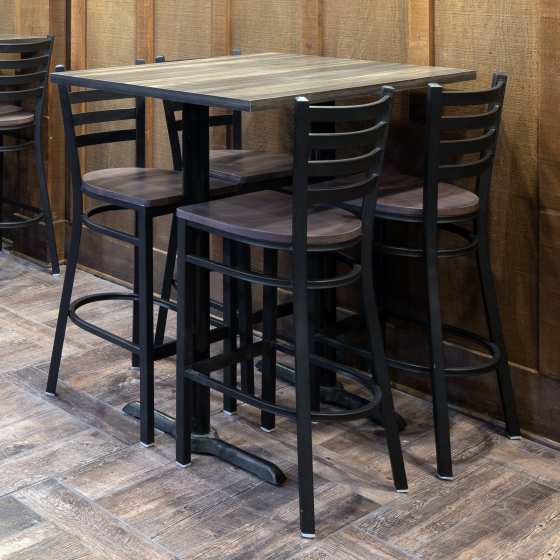
Bars are a common feature in many dining establishments, with bar height tables being a popular choice in venues that serve lighter fare and a variety of alcoholic beverages. They are particularly well-suited to smaller establishments, as the combination of chairs and bar stools can give the illusion of a more spacious environment.
Frequently Asked Questions
How Much Space Should be Between Restaurant Tables?
When planning or renovating a restaurant layout, it is important to prioritize table spacing. While there may be exceptions to this rule, the recommended distance between each table ideally falls within the range of 24 to 30 inches (60 to 80 cm) apart.
What Table Top Size do I Need?
It varies depending on a few factors but below are a few examples to give you some idea:
- 2 Person: 24” round; 24” x 24” square; 24" x 30" rectangular.
- 4 Persons: minimum sizes range from 30” x 30” square to 36” round and 24” x 48” rectangle.
- 6-8 Person: minimum sizes range from 42” x 42” square to 48” round and 30” x 60” rectangle.

